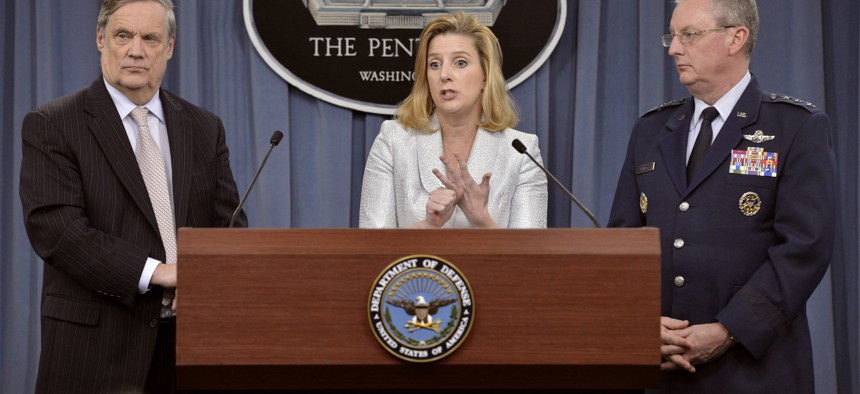
DoD Photo by Glenn Fawcett
The 2014 QDR: A Pentagon Strategy that Delivers, well, Strategy
Using a 2010 panel's recommendations as a guide, the 2014 QDR shows the Pentagon is making progress on several fronts.
Over the next several days, weeks, and months, members of the defense community will pore over the just released 2014 Quadrennial Defense Review. Many metrics will be used to evaluate the document, but perhaps none more appropriate than the congressionally mandated assessment of the 2010 QDR. In a previous post, GBC identified 6 key findings from that assessment that serve as useful benchmarks for evaluating the new version. With regard to all but one, the Department of Defense has made significant improvements.
Most importantly, the Pentagon has produced a QDR of serious long-term analysis and strategy. Former Secretary of Defense Les Aspin intended the QDRs to be free ranging examinations of U.S. grand strategy when they were initiated 20 years ago, but the 2010 assessment derided recent iterations for becoming mere “explanations and justifications… of established decisions and plans.” After 12 years of war in Afghanistan and Iraq, the new QDR emphasizes the need to rebalance to face new realities. Recognizing geopolitical change, the evolution of warfare, improved capabilities of adversaries, and budget constraints, the 2014 QDR calls for rebalancing national security priorities, military force structures, and the defense institution itself.
The 2014 QDR also marks progress addressing the 2010 assessment’s recommendations regarding collaboration with partners, force-planning constructs, the increasingly expensive All-Volunteer Force, and defense acquisition. Accordingly, the new strategy plays up the need to work together effectively with both domestic and international partners to build U.S. and global security, calls for increased force structures for the Asia-Pacific and cyber, plans to curb military pay and compensation to ensure the All-Volunteer Force remains financially sustainable, and draws attention to acquisition reform initiatives. It remains to be seen how effective the Pentagon will be in tackling each of these issues, but it is certainly clear that defense leaders have developed plans to take them on.
The issue the Pentagon’s new strategy overlooks is professional military education (PME) reform. The 2010 independent panel commended the 2010 QDR for discussing PME, but called upon the Pentagon to make structural reform to elevate and enhance it for rising military leaders. More recently, military experts including Thomas Ricks and Professor Joan Johnson-Freese have emphasized the need to reform PME to better prepare military leaders for a changing world. Given the 2014 QDR’s focus on innovation and adaptiveness as cornerstones of the Pentagon’s future national security strategy, it is surprising the document does not once discuss the role of PME. To ensure that those executing the QDR's strategy are fully prepared to take on the new challenges it highlights, the Pentagon might consider revisiting PME reform.
This post is written by Government Business Council; it is not written by and does not necessarily reflect the views of Government Executive Media Group's editorial staff. For more information, see our advertising guidelines.



